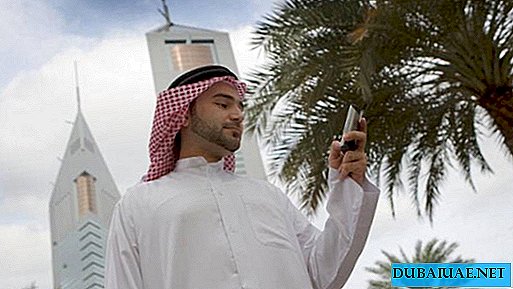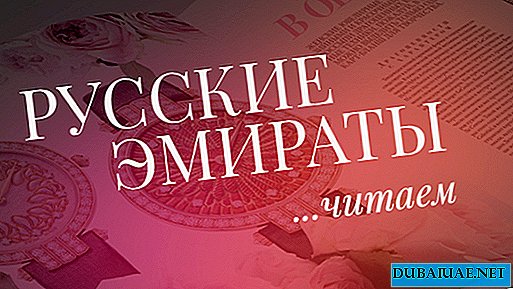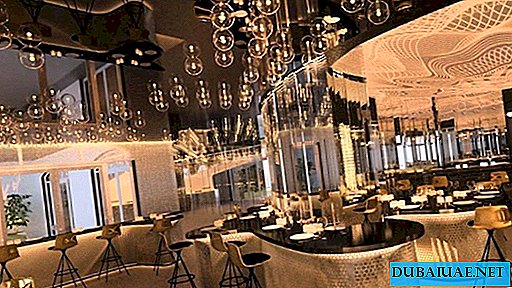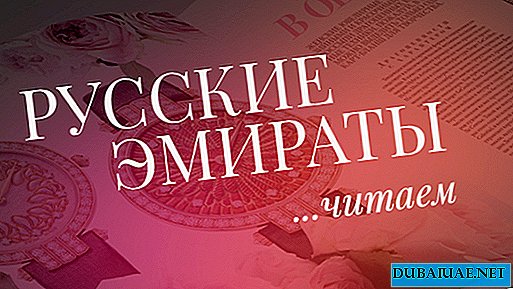The Dubai National Museum was created and officially opened on May 12, 1971.
 In order to protect and preserve this architectural monument, the fort building was renovated in 1971 during the then reign of Sheikh Maktoum bin Rashid Al Maktoum, the former vice president and prime minister of the United Arab Emirates, in Dubai, in order to continue to use it as a city museum .
In order to protect and preserve this architectural monument, the fort building was renovated in 1971 during the then reign of Sheikh Maktoum bin Rashid Al Maktoum, the former vice president and prime minister of the United Arab Emirates, in Dubai, in order to continue to use it as a city museum .
 The diverse collection collected at the Dubai Museum presents to the public a surprisingly rich history and culture of the emirate. The museum has a collection of exhibits that reflect the various aspects of social, economic and professional life that prevailed in Arabia in the XIXXX centuries. Here you can see how the local population dived into the sea for pearls, sets of scales used to sell pearls are displayed. The museum also recreated scenes from the life of merchants, fishermen, housewives, tailors. In some showcases, wedding dresses traditional for the region are presented.
The diverse collection collected at the Dubai Museum presents to the public a surprisingly rich history and culture of the emirate. The museum has a collection of exhibits that reflect the various aspects of social, economic and professional life that prevailed in Arabia in the XIXXX centuries. Here you can see how the local population dived into the sea for pearls, sets of scales used to sell pearls are displayed. The museum also recreated scenes from the life of merchants, fishermen, housewives, tailors. In some showcases, wedding dresses traditional for the region are presented.
The museum houses a great variety of archaeological objects, such as pottery, stone and metal tools, stone engravings and skeletons, which were discovered during archaeological research in various areas of the emirate of Dubai, such as Hatta, Al-Saffuh, Al-Qusais and Jumeirah . Findings from these excavations date back to the third, second and first millennia BC, as well as to the Islamic era (VII - XIII centuries BC). The museum exposition includes exhibits and archaeological finds discovered in this region, some of which are more than 4000 years old.
In the past, the fort was used to protect the city from militant neighboring tribes, and also at various times served as a meeting place for the government, the residence of the ruler of Dubai, a warehouse for food and ammunition, and even a prison. In the museum you can get acquainted with a magnificent diorama depicting the charm and course of commercial life along the banks of the legendary waterway - the Dubai Lagoon, which divides the city into two parts. The lagoon has always served as a means of survival for Dubai, providing a safe haven for commercial and fishing vessels.
Realistically recreated life-size pictures of coastal life in the museum contribute to a greater understanding of the traditions of the people of Dubai. It is especially interesting to consider models of traditional wooden fishing schooners - dhows and photographs depicting the work of shipyards, the processes of fishing, diving behind pearl shells and selling pearls. Wooden fishing boats are displayed in the courtyard of Fort Al-Fahidi, and impressive dioramas have been created in the museum’s halls depicting the work of divers using pearls, and devices used to dive to the depths and collect shells. The export of pearls at one time became the main factor in increasing the role of Dubai as the leading center of trade in the region.
The traditional Arab markets (souq) are often referred to as “the true heart of Arabia,” and nowhere does this statement sound as true as in Dubai. The famous bazaars of the city since the end of the 19th century have attracted merchants from such distant countries as India, Iran, and the east coast of Africa. In the museum, you can feel the atmosphere of a real oriental bazaar of the 1950s, passing through the narrow labyrinths of spice warehouses, shops with clay dishes, carpentry and sewing workshops and rows of small shops with groceries and fabrics.
 The walls of the fort are made of shell rock and fragments of coral, bonded with lime mortar. Powerful wooden floors are designed to support the floors of the upper tier. The roof is made of palm branches, clay and a binder solution. Numerous potholes in the walls and towers of the fort indicate conflicts of the past, and a massive, iron-studded door stands in the entrance as a memorial that perpetuates the power and strength of those times. When the museum was opened by the ruler of Dubai in 1971, the main goal of the collection's keepers was to create a chronicle of the traditional life of the emirate, most of which is rapidly disappearing. Local antique items were collected and preserved, along with handicrafts from many African and Asian countries, which were the emirate's traditional partners in its long commercial history. At the entrance to the museum, you can see a collection of old maps of the Gulf and the Emirates, along with bird's-eye photographs showing how the city grew and developed.
The walls of the fort are made of shell rock and fragments of coral, bonded with lime mortar. Powerful wooden floors are designed to support the floors of the upper tier. The roof is made of palm branches, clay and a binder solution. Numerous potholes in the walls and towers of the fort indicate conflicts of the past, and a massive, iron-studded door stands in the entrance as a memorial that perpetuates the power and strength of those times. When the museum was opened by the ruler of Dubai in 1971, the main goal of the collection's keepers was to create a chronicle of the traditional life of the emirate, most of which is rapidly disappearing. Local antique items were collected and preserved, along with handicrafts from many African and Asian countries, which were the emirate's traditional partners in its long commercial history. At the entrance to the museum, you can see a collection of old maps of the Gulf and the Emirates, along with bird's-eye photographs showing how the city grew and developed.
In the halls of the museum a variety of finds and treasures are exhibited. A large section is devoted to musical instruments, such as drums, flutes, lyres, bagpipes made from goatskins, and many other instruments made by local craftsmen and used during holidays and celebrations. In a less peaceful hall, a variety of weapons are presented - crooked daggers, known as the "dummy", swords, spears, bows and arrows, shields made of whale skin, pistols and axes.
The Wind Tower is a special room where models of traditional wind towers are presented, which are an interesting feature of local architecture, with diagrams and photographs of various types of such towers in the old parts of Dubai. Wind towers are the most important feature of the architecture of the Gulf countries, allowing residents of the region to more easily endure the discomfort of the hot summer months. These square masonry towers are called “barazil” in Arabic. They are open from all sides and rise up much higher than the roof. Through the openings in the towers, a light breeze enters them, cools and heads to the room below, where air traffic increases, providing comfort to residents. In fact, wind towers are a prototype of the first air conditioners. Exhaust wind towers are usually open in the summer and closed during the winter season. The builders of those days showed wonders of ingenuity by creating wind towers of various heights and unique decoration in various projects.
The Arish Khaimah building, located near the museum, is a typical Arab dwelling. An interesting collection of local boats is arranged near it. It includes an exact copy of the famous water taxi abra used to transport passengers along the Dubai Lagoon from one coast to another. Dubai's traditional buildings are considered to be some of the finest examples of Gulf architecture. The earliest buildings were constructed using very modest building materials - leaves and trunks of palm trees (arish).
So, the Dubai Museum stores in its halls the most important events from the life of the emirates - trade, traditional family life, life in the desert, life at sea and much more. If you have a free moment, stop by the Dubai Museum to get to know the recent emirate of Dubai, rapidly dressing in glass and concrete, replacing shell rock, mortar and palm branches ...











